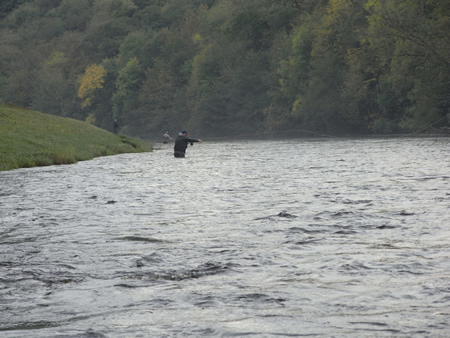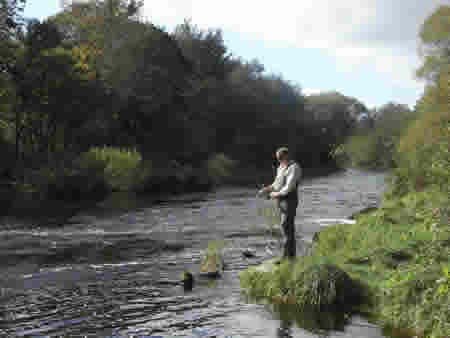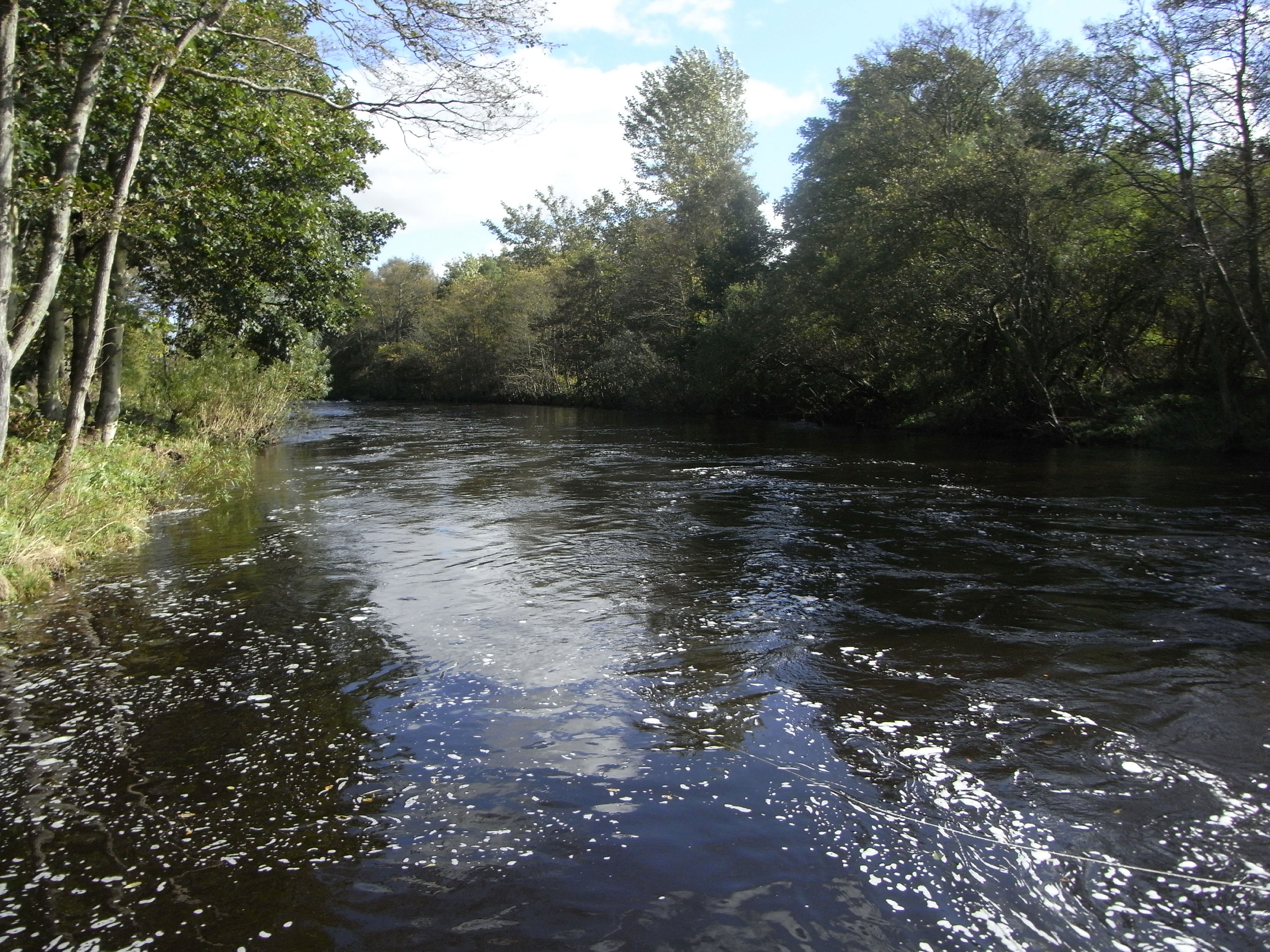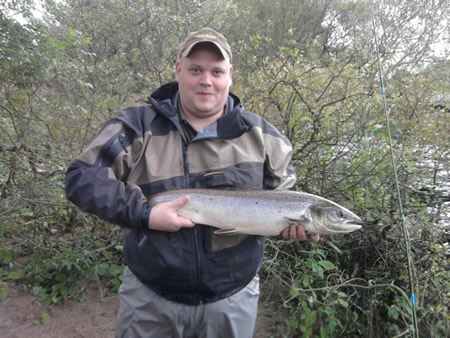These bulletin blogs represent news about Finavon and the South Esk, and my views as a riparian owner. They are not the views of any other organisation, nor are they designed to promote the interests of any individual or organisation other than Finavon Castle Water and factors affecting the fishery. Tony Andrews
A friend of mine who owns a beat on the Aberdeenshire Dee told me last week that “late runners are poor takers”. At least that is the received wisdom on the Dee, and it chimes with my own experience. At Finavon at this time of year we often find a river full of fish. Many of our salmon are colouring up and, with the last vestiges of summer warmth as the ambient temperature stays up, the fish have no incentive to move on or to take the fly. I have noticed this year especially that the run-off from the succession of spates has remained peaty, the water deeply stained and the surface full of bubbles and foam from the peat bogs in the upper glen. In these conditions fish rarely take the fly with any conviction, in sharp contrast to the eagerness of early season salmon and fresh-run sea trout.
This is all a bit gloomy, and Finavon’s catches reflect the slow pace of sport, although it is true to add that quite a number of fish have been hooked and lost. As I write this bulletin on the 6th of October we stand at 118 salmon and 97 sea trout for the 2011 season. Our visiting fishers are asking me what will change the current impasse, where salmon are in the pools but ignoring every fly, regardless of colour, size and varied presentation. I have no easy answer, except to say that experience tells us that when the first frosts bite deep, and the leaves fall like snow (!) and the water temperature plummets the fish will start to take the fly again. The other advantage of cooler water is that the speed of the upstream migration is slowed down. salmon linger in Finavon’s pools for longer and, provided there is an autumn run of fish still to come, we should see some fresh, silver fish in the pools. And of course these fresh fish tend to be better takers, especially if there is a freshet. Conditions become more challenging as the post equinoctial winds make casting tricky and bring more leaves down – the minestrone syndrome!
The forecast is for cooler weather, with more wind and rain at the weekend. As the night temperature falls we will be moving into autumn proper and my guess is that salmon fishing conditions will get better.
The North Tyne on the 1st of October 2011 when this upper river beat, not far downstream of Kielder Dam, was full of MSW salmon.
Last week I was invited to fish the North Tyne in Northumberland, which gave us a display of multi sea-winter fish the likes I have not seen since the early 1970s. There were huge numbers of salmon, very few of them silver, some in the upper teens of pounds, showing all day long. Sometimes there were two or three salmon showing simultaneously, like synchronised swimmers. But they were reluctant to take. For the four of us fishing that day there were only six pulls, two of which resulted in fish, the biggest at 15lbs. Hard going across the country, but plenty of fish! It’s not often that I fish another river, being hefted to the South Esk as I am, but seeing the dark waters of the lovely North Tyne for the first time was a brand new and interesting experience.
TA



